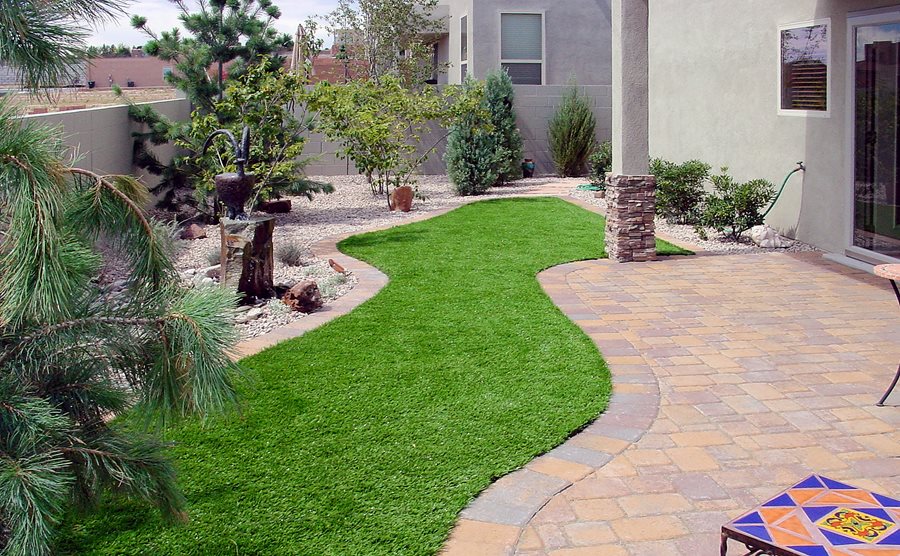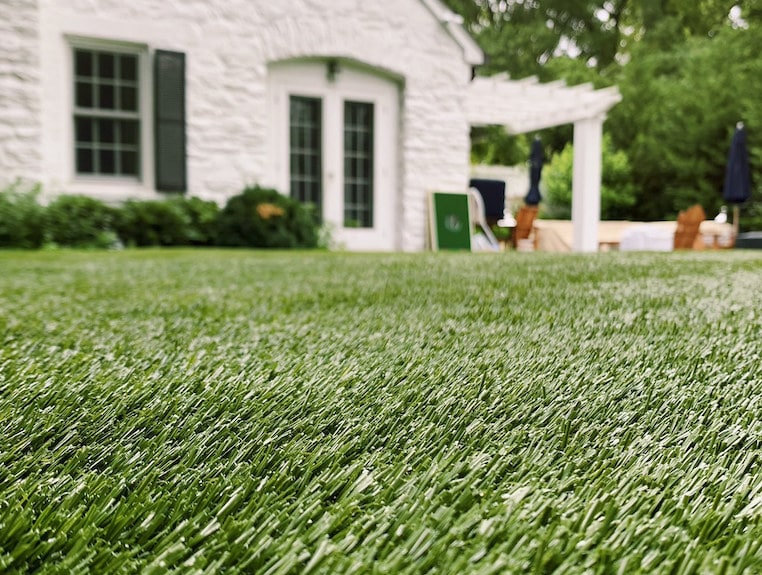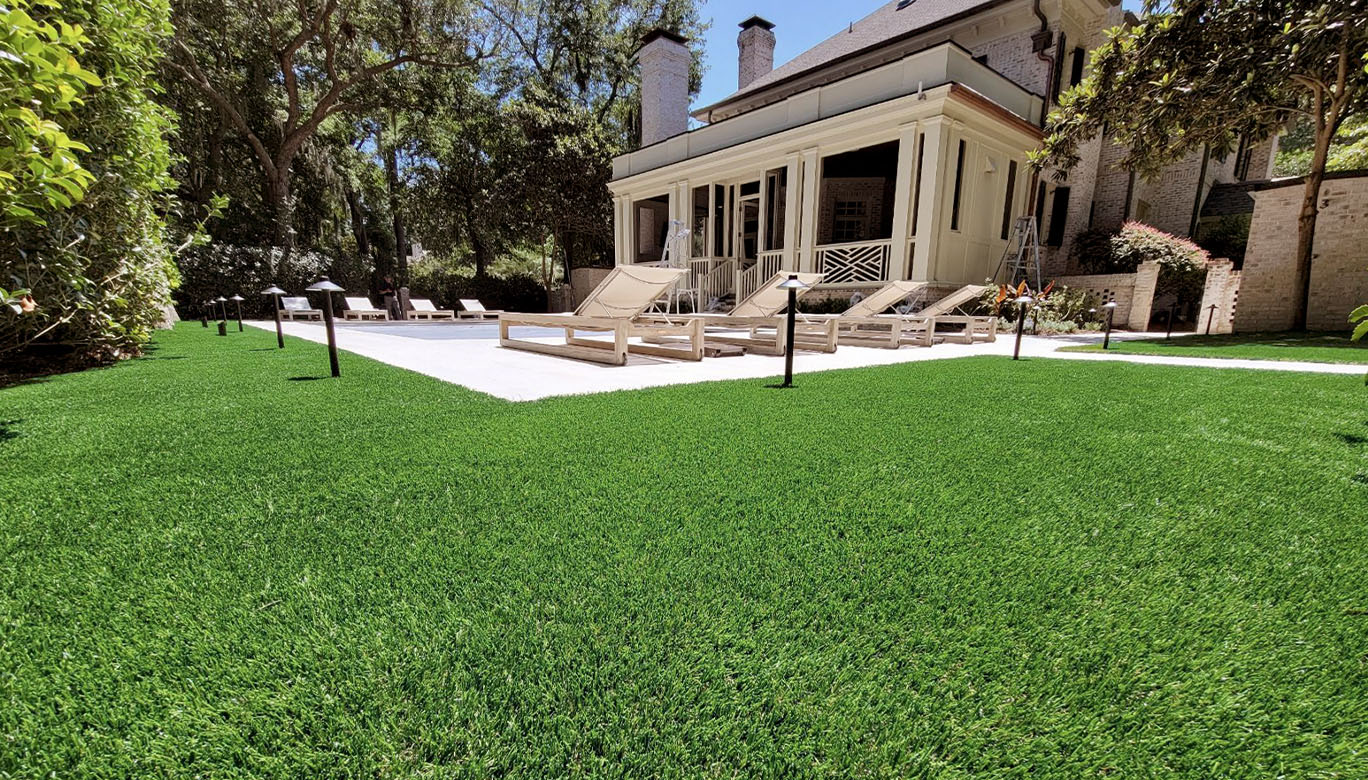Explore the Environmental Benefits of Opting for Artificial Grass Solutions
The adoption of artificial grass remedies provides a compelling chance to deal with pushing environmental challenges. By significantly lowering water usage and lessening the application of hazardous chemicals, these alternatives not only advertise lasting landscaping however additionally protect regional communities. The reduced carbon impact linked with decreased maintenance tasks contributes to a much more sustainable method to land monitoring. The ramifications of these benefits prolong beyond plain preservation initiatives, raising questions concerning their long-term influence on habitat conservation and overall eco-friendly equilibrium. Discovering these dimensions reveals a complex interaction worth taking into consideration.
Water Preservation Conveniences
Among the most significant benefits of synthetic grass is its capability to save water. Traditional lawn yards require substantial irrigation, specifically in areas prone to drought or water limitations. On the other hand, fabricated lawn does not need watering, significantly decreasing the general demand for water sources. This function is especially valuable in dry regions where water shortage is a pushing problem.
By removing the demand for routine watering, artificial turf adds to sustainable landscape methods and assists minimize the environmental influence of excessive water intake. In addition, the preservation of water encompasses the reduction of overflow, which can bring about soil erosion and waterway air pollution.
Additionally, the installation of synthetic grass permits home owners and towns to allocate water resources more successfully, focusing on essential usages such as drinking water and agriculture. The change in the direction of synthetic grass not only advertises responsible water usage yet additionally aligns with broader environmental objectives targeted at protecting all-natural resources.
As communities increasingly prioritize sustainability, the water preservation advantages of synthetic grass offer an engaging instance for its adoption in domestic and commercial landscape design projects.
Reduced Chemical Use
The change to synthetic grass considerably reduces the reliance on chemical treatments commonly utilized in all-natural grass upkeep. Standard lawn management usually involves the application of chemicals, herbicides, and fertilizers to promote growth and control bugs. These chemicals can present risks to human health, regional wildlife, and the atmosphere, adding to dirt and water contamination.
In comparison, synthetic grass removes the demand for these damaging materials. As soon as installed, it requires marginal upkeep, mainly consisting of regular cleansing and occasional infill replenishment. This decrease in chemical usage not just benefits the immediate environment yet additionally adds to broader environmental stability. By reducing the release of artificial substances into the environment, synthetic grass advertises healthier dirt and water systems.
Moreover, the lack of chemical drainage associated with synthetic grass setups helps protect local waterways from air pollution, sustaining aquatic life and preserving biodiversity. Artificial turf companies phoenix. As neighborhoods progressively focus on lasting practices, selecting synthetic grass provides a viable solution that straightens with environmental conservation objectives. With this shift, homeowner can delight in lavish environment-friendly areas without compromising eco-friendly wellness, leading the way for a much more sustainable future
Reduced Carbon Impact

Furthermore, the installation of synthetic grass can lead to considerable water conservation. All-natural grass need considerable quantities of water for irrigation, which not only contributes to the carbon footprint linked with water extraction and therapy however also strains regional water sources. On the other hand, synthetic grass needs minimal upkeep, calling for no watering, thereby significantly decreasing water usage and its connected power prices.
Furthermore, the longevity of man-made turf contributes to its reduced carbon effect. With a life expectancy of approximately 15 years or even more, the requirement for regular substitutes is diminished, leading to much less waste and reduced power consumption in production and dealing with typical yard choices. Overall, synthetic lawn offers a sustainable alternative find more info for ecologically conscious landscape design.
Environment Preservation
Habitat conservation is a crucial consideration in the debate over landscape design selections, specifically when comparing fabricated lawn to natural turf. All-natural turf lawns often require considerable upkeep, consisting of the use of herbicides, chemicals, and plant foods, which can detrimentally impact regional communities. These chemicals can leach right into the dirt and rivers, hurting native vegetation and animals and interrupting neighborhood environments.
Man-made turf gets rid of the requirement for unsafe chemicals, thus protecting neighboring wildlife and preserving the integrity of bordering ecosystems. The setup of synthetic grass can lead to the conversion of previous turf locations right into more check my blog biodiverse landscapes, such as pollinator yards or indigenous plant locations, which can support regional wild animals.
Ultimately, the transition to man-made grass not only conserves water and decreases maintenance initiatives yet additionally cultivates a much more harmonious relationship in between human tasks and the natural surroundings, promoting environment conservation at the same time.
Long-Term Sustainability
Long-term sustainability is a crucial consider reviewing the advantages of synthetic grass over traditional grass yards. Among one of the most substantial advantages of synthetic grass is its durability; it can last up to 15-20 years with minimal upkeep, whereas all-natural lawn calls for regular reseeding and substitute. This longevity minimizes the requirement for constant resources, such as water, plant foods, and chemicals, which are necessary for maintaining a healthy and balanced turf lawn.
Furthermore, synthetic grass adds to a decrease in carbon exhausts associated with grass care tools. Typical yards often require gas-powered lawn mowers, leaners, and blowers, every one of which add to air pollution. Artificial turf companies phoenix. On the other hand, synthetic grass eliminates the demand for such equipment, advertising a cleaner setting
In addition, the production of fabricated grass increasingly makes use of recycled products, improving its sustainability account. As suppliers adopt eco-friendly methods, the ecological footprint of synthetic grass proceeds to diminish.

Conclusion
The fostering of synthetic turf services offers substantial environmental advantages, including considerable water preservation, minimized dependence on dangerous chemicals, and a reduced carbon footprint. Man-made turf aids in protecting all-natural habitats by minimizing land disturbance and advertising long-term sustainability through the use of sturdy materials. Collectively, these factors highlight the capacity of synthetic grass to add positively to ecological health and wellness and offer a viable alternative to typical landscaping methods in an increasingly resource-conscious world.
In comparison, synthetic turf does not require watering, significantly decreasing the general demand for water sources. By minimizing the launch of artificial compounds right into the community, synthetic lawn promotes much healthier soil and water systems.
Additionally, the installation of man-made lawn can result in significant water conservation. In comparison, man-made turf requires minimal maintenance, needing no watering, consequently substantially decreasing water usage and its linked power expenses.
